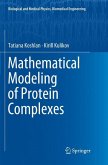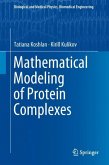This book gives an introduction to molecular biophysics. It starts from material properties at equilibrium related to polymers, dielectrics and membranes. Electronic spectra are developed for the understanding of elementary dynamic processes in photosynthesis including proton transfer and dynamics of molecular motors. Since the molecular structures of functional groups of bio-systems were resolved, it has become feasible to develop a theory based on the quantum theory and statistical physics with emphasis on the specifics of the high complexity of bio-systems. This introduction to molecular aspects of the field focuses on solvable models. Elementary biological processes provide as special challenge the presence of partial disorder in the structure which does not destroy the basic reproducibility of the processes. Apparently the elementary molecular processes are organized in a way to optimize the efficiency. Learning from nature by means exploring the relation between structure andfunction may even help to build better artificial solar cells.
The reader is exposed to basic concepts in modern biophysics, such as entropic forces, phase separation, potential of mean force, electron and proton transfer, heterogeneous reactions, coherent and incoherent energy transfer as well as molecular motors. Basic knowledge in classical and Quantum mechanics, electrostatics and statistical physics is desirable. Simplified models are presented which can be solved in limited cases analytically from the guiding lines to generate the basis for a fundamental understanding of the more complex biophysical systems. Chapters close with challenging problems whose solutions are provided at the end of the book to complete the pedagogical treatment in the book.
To the second edition several new chapters were added. The medium polarization is treated self-consistently using basic elements of polaron theory and more advanced nonlinear Schrödinger equations to describe the dynamicsof solvation. Ion transport through a membrane was extended by the discussion of cooperative effects. Intramolecular transitions are now discussed in the new edition in much more detail, including also radiationless transitions. Very recent developments in spectroscopy are included, especially two-dimensional and hole-burning spectroscopy. The discussion of charge transfer processes was extended by including recent results of hole transfer in DNA in connection with the super-exchange mechanism. The chapter on molecular motors was rewritten to include the most recent developments of new models.
The book is a useful text for students and researchers wanting to go through the mathematical derivations in the theories presented. This book attracts a group of applied mathematically oriented students and scholars to the exciting field of molecular biophysics.
The reader is exposed to basic concepts in modern biophysics, such as entropic forces, phase separation, potential of mean force, electron and proton transfer, heterogeneous reactions, coherent and incoherent energy transfer as well as molecular motors. Basic knowledge in classical and Quantum mechanics, electrostatics and statistical physics is desirable. Simplified models are presented which can be solved in limited cases analytically from the guiding lines to generate the basis for a fundamental understanding of the more complex biophysical systems. Chapters close with challenging problems whose solutions are provided at the end of the book to complete the pedagogical treatment in the book.
To the second edition several new chapters were added. The medium polarization is treated self-consistently using basic elements of polaron theory and more advanced nonlinear Schrödinger equations to describe the dynamicsof solvation. Ion transport through a membrane was extended by the discussion of cooperative effects. Intramolecular transitions are now discussed in the new edition in much more detail, including also radiationless transitions. Very recent developments in spectroscopy are included, especially two-dimensional and hole-burning spectroscopy. The discussion of charge transfer processes was extended by including recent results of hole transfer in DNA in connection with the super-exchange mechanism. The chapter on molecular motors was rewritten to include the most recent developments of new models.
The book is a useful text for students and researchers wanting to go through the mathematical derivations in the theories presented. This book attracts a group of applied mathematically oriented students and scholars to the exciting field of molecular biophysics.
From the book reviews:
"This is a good text deriving formulae of interest to Biophysicists, students of mathematics, fellows, and theoretical physicists. The dynamic predicate calculus and differential forms inc. Kramer's Rules and Theorems are defined and further developed in sequential linear theory." (Joseph J. Grenier, Amazon.com, August, 2014)
"Biophysics is a fast growing area at the interface between physics and biology ... . The book by Scherer and Fischer is a first attempt in this direction. Their effort is laudable. ... The book will be a useful text for students and researchers wanting to go through the mathematical derivations in the theories presented. ... this book will attract a group of applied mathematically oriented students and scholars to the exciting field of molecular biophysics." (Hong Qian, Mathematical Reviews, Issue 2012 c)
"Intended for graduate students, Theoretical Molecular Biophysics by Philipp Scherer and Sighart Fischer grew out of a biophysics course taught by the authors in the physics department of the Technical University of Munich. ... A striking feature of Theoretical Molecular Biophysics is the large number of equations relative to text ... . chapters close with challenging problems whose solutions are provided at the end of the book. ... The book closes with an interesting review of molecular-motor models." (H. Richard Leuchtag, Physics Today, May, 2011)
"This is a good text deriving formulae of interest to Biophysicists, students of mathematics, fellows, and theoretical physicists. The dynamic predicate calculus and differential forms inc. Kramer's Rules and Theorems are defined and further developed in sequential linear theory." (Joseph J. Grenier, Amazon.com, August, 2014)
"Biophysics is a fast growing area at the interface between physics and biology ... . The book by Scherer and Fischer is a first attempt in this direction. Their effort is laudable. ... The book will be a useful text for students and researchers wanting to go through the mathematical derivations in the theories presented. ... this book will attract a group of applied mathematically oriented students and scholars to the exciting field of molecular biophysics." (Hong Qian, Mathematical Reviews, Issue 2012 c)
"Intended for graduate students, Theoretical Molecular Biophysics by Philipp Scherer and Sighart Fischer grew out of a biophysics course taught by the authors in the physics department of the Technical University of Munich. ... A striking feature of Theoretical Molecular Biophysics is the large number of equations relative to text ... . chapters close with challenging problems whose solutions are provided at the end of the book. ... The book closes with an interesting review of molecular-motor models." (H. Richard Leuchtag, Physics Today, May, 2011)








